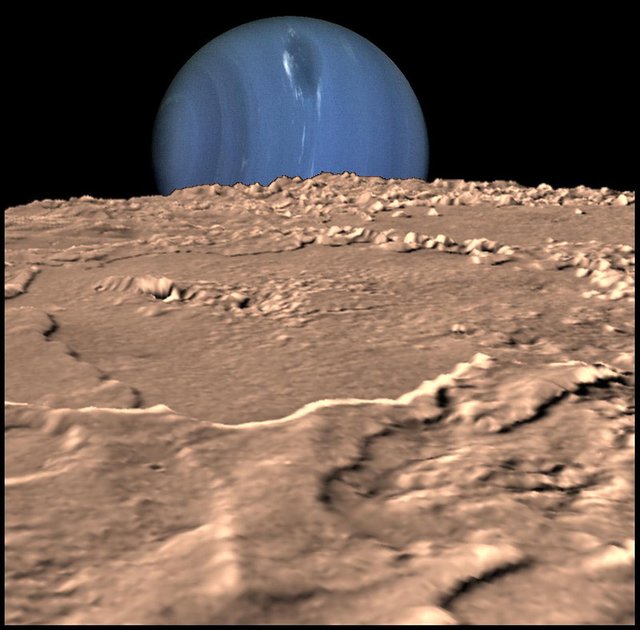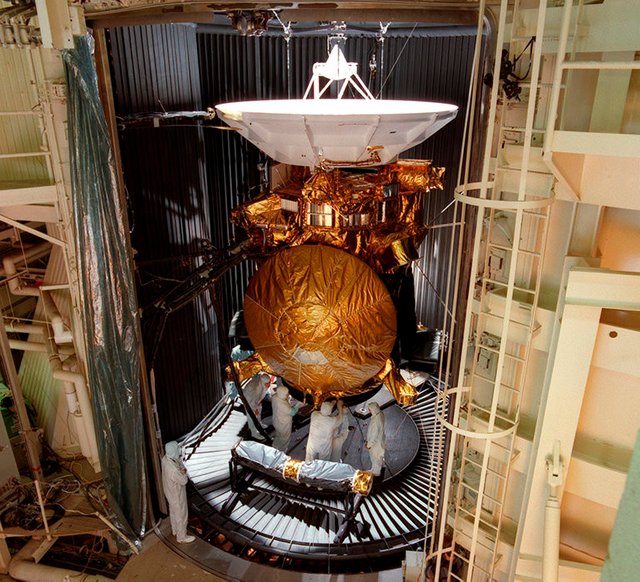Missed opportunities to study Neptune and Pluto
Alan Stern, who headed New Horizons mission to Pluto, in 1991, with Jonathan Lunine and David Morrison, presented a proposal to NASA to venture forth into unexplored territory. If they’d had their way, NASA would have sent probes to Neptune and Pluto.

Image: NASA Montage from Voyager-2 flyby images
Their proposal called for the crafts to be clones of the Cassini mission - reliable spacecraft, exploring Saturn system for 13 years and preparing to end its mission on Sept. 15.
In the proposal the probes are sometimes referred to as the Neptune Mariner and Pluto Mariner.
Both missions would have launched between 2001 and 2003, then to get necessary velocity, both would use gravitational manoeuvres around Venus first, then around Earth (Cassini did the same). Next, they were to get additional velocity at Jupiter - Pluto probe around 2006, Neptune craft following within year or two.

Image: NASA Cassini before launch. On the side - thermal shield of Huygens - Titan probe
After Jupiter flyby, their paths would part. The Pluto encounter would have taken place around 2015, while the Neptune probe, would begin its encounter in 2020. However, the Neptune probe, along with its encounters of Jupiter’s moons, would have come close enough to centaur Chiron (not Pluto's satellite Charon). Centaurs - asteroids, habiting region between Saturn and Uranus.
Instead of Huygens Titan probe on board of Cassini, Neptune probe would carry atmosperic probe to dive into Neptune clouds, Galileo-style:
The Neptune probe’s encounter would begin by sending a Hugyens-like lander into the atmosphere of Neptune, then entering orbit after a long period of imaging and reconnaissance. The craft would have repeatedly used Triton to propel itself through the rest of the region, bringing a 200-day orbit down to 80.
Pluto mission would be flyby mission, like New Horizons, but it would be in fact, two probes. On the place of lander, it would carry Pluto imaging probe, which would be released at 100 days before encounter in 2015. By sending the smaller probe ahead, the team would be able to use imaging from the Pluto flyby and the probe to build a complete view of Pluto and Charon. The New Horizons craft got only a view of one Pluto's/Haron's side.

Image: WikiMedia Commons - Proposed Pluto Imaging probe
Unfortunately, these missions were never realized. This was one of the several drafts of a Pluto mission, Alan Stern and his team would submit before the New Horizons mission was approved.
Additionally, if these missions would approved, production of Plutonium-238, used for Radio Thermal Generators, would not stop and it wouldn't be in short supply now.
Now, NASA has not Neptune mission on the table. The only data, we have about the blue world are obtained from single Voyager-2 flyby, and Hubble...
For further reading: http://www.astronomy.com/news/2017/04/the-almost-pluto-and-neptune-missions
I strongly believe that New Horizons have been the greatest moment in space exploration for the last almost 20 years.
And once everyone start digesting all the informatiion that the probe is sending to us -once reprocessed by the team, of course- people is learning about the probe itself. Alan deserves a prominent place in the Hall of Space Exploration (if it exists).
Galileo, Curiosity, Cassini, Messenger, Dawn, Hubble and dozen else - their teams deserve the same!